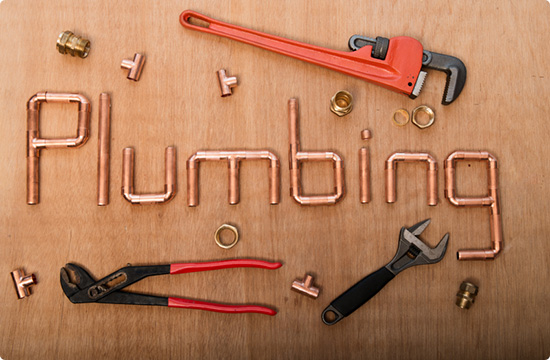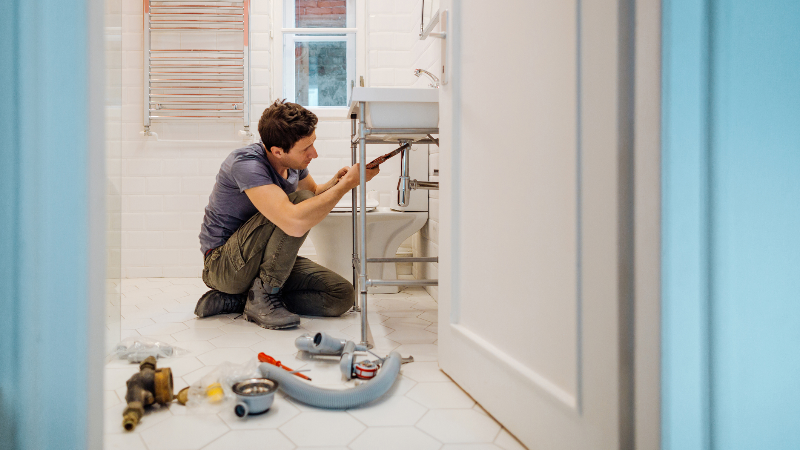Grasping Plumbing Sounds: A Complete Guide To Fixing Them in Your Residence
Grasping Plumbing Sounds: A Complete Guide To Fixing Them in Your Residence
Blog Article
The content listed below in relation to Why is My Home Making Strange Plumbing Noises is especially attention-grabbing. You should give it a look.

To diagnose loud plumbing, it is important to identify very first whether the unwanted audios happen on the system's inlet side-in various other words, when water is turned on-or on the drainpipe side. Sounds on the inlet side have varied causes: too much water stress, used shutoff and faucet parts, incorrectly linked pumps or various other home appliances, inaccurately positioned pipeline bolts, as well as plumbing runs including too many tight bends or other constraints. Sounds on the drain side usually originate from bad location or, just like some inlet side sound, a design including limited bends.
Hissing
Hissing sound that happens when a tap is opened slightly usually signals too much water stress. Consult your neighborhood public utility if you think this issue; it will certainly have the ability to inform you the water stress in your location as well as can install a pressurereducing valve on the incoming water system pipeline if necessary.
Thudding
Thudding sound, typically accompanied by trembling pipes, when a faucet or home appliance valve is shut off is a condition called water hammer. The sound and vibration are triggered by the reverberating wave of stress in the water, which suddenly has no place to go. Sometimes opening a valve that releases water quickly into an area of piping including a limitation, arm joint, or tee installation can generate the very same problem.
Water hammer can normally be treated by mounting installations called air chambers or shock absorbers in the plumbing to which the trouble shutoffs or faucets are attached. These devices enable the shock wave created by the halted flow of water to dissipate in the air they include, which (unlike water) is compressible.
Older plumbing systems may have brief upright areas of capped pipe behind walls on faucet runs for the same function; these can at some point fill with water, reducing or damaging their efficiency. The treatment is to drain pipes the water system totally by shutting down the primary water system shutoff as well as opening all taps. Then open the major supply shutoff and also close the taps one by one, starting with the tap nearest the valve and also ending with the one farthest away.
Chattering or Shrilling
Intense chattering or screeching that takes place when a shutoff or faucet is turned on, and that generally vanishes when the installation is opened fully, signals loosened or faulty inner components. The service is to replace the shutoff or tap with a brand-new one.
Pumps and also appliances such as washing makers as well as dish washers can move motor noise to pipelines if they are incorrectly attached. Connect such products to plumbing with plastic or rubber hoses-never inflexible pipe-to isolate them.
Various Other Inlet Side Noises
Creaking, squeaking, damaging, snapping, and also tapping usually are brought on by the development or contraction of pipelines, usually copper ones providing warm water. The noises happen as the pipes slide against loose fasteners or strike close-by home framework. You can frequently determine the area of the problem if the pipelines are subjected; simply comply with the noise when the pipelines are making sounds. Most likely you will discover a loose pipe hanger or a location where pipelines lie so close to flooring joists or other mounting pieces that they clatter against them. Attaching foam pipeline insulation around the pipelines at the point of contact need to fix the problem. Make certain bands as well as wall mounts are protected and offer sufficient support. Where feasible, pipe fasteners need to be affixed to massive architectural components such as foundation walls instead of to mounting; doing so minimizes the transmission of vibrations from plumbing to surface areas that can enhance as well as move them. If connecting bolts to framework is unavoidable, cover pipes with insulation or various other resilient product where they contact fasteners, as well as sandwich the ends of brand-new fasteners in between rubber washing machines when mounting them.
Remedying plumbing runs that suffer from flow-restricting tight or countless bends is a last hope that ought to be undertaken only after seeking advice from a skilled plumbing specialist. Unfortunately, this scenario is relatively typical in older homes that might not have been developed with indoor plumbing or that have seen numerous remodels, specifically by novices.
Drainpipe Noise
On the drain side of plumbing, the chief goals are to remove surface areas that can be struck by dropping or hurrying water and also to shield pipelines to contain unavoidable sounds.
In new building, bathtubs, shower stalls, toilets, and also wallmounted sinks and also containers ought to be set on or versus resilient underlayments to reduce the transmission of noise with them. Water-saving bathrooms as well as faucets are much less noisy than traditional models; mount them rather than older types even if codes in your location still allow using older components.
Drainpipes that do not run vertically to the cellar or that branch right into horizontal pipeline runs sustained at flooring joists or various other framing existing specifically problematic noise troubles. Such pipes are big enough to emit significant resonance; they also lug significant amounts of water, which makes the scenario worse. In brand-new construction, specify cast-iron dirt pipes (the big pipelines that drain bathrooms) if you can afford them. Their enormity consists of a lot of the noise made by water travelling through them. Additionally, avoid routing drains in walls shown rooms and also areas where people gather. Wall surfaces containing drainpipes need to be soundproofed as was explained previously, using dual panels of sound-insulating fiberboard as well as wallboard. Pipelines themselves can be covered with special fiberglass insulation created the purpose; such pipelines have a resistant vinyl skin (occasionally consisting of lead). Results are not always satisfying.
If Your Plumbing is Making These Sounds, There’s a Problem
A Bang or Thump When You Turn Off a Faucet
If a loud bang or thump greets you each time your turn off running water, you likely have a water hammer. A water hammer occurs when the water velocity is brought to a halt, sending a shock wave through the pipe. It can be pretty jarring — even worse, damaging to your plumbing system. All that thudding could loosen connections.
Strange Toilet Noises
You’re so familiar with the sounds your toilet makes that your ears will be attuned to anything out of the ordinary. Fortunately, most unusual toilet noises can be narrowed down to just one of several problems.
Foghorn sound:
Open the toilet tank Flush the toilet When you hear the foghorn noise, lift the float to the top of the tank If you’re ambitious, you can remove the ballcock valve and disassemble it to replace the washer. Or you can more easily replace the ballcock valve entirely. This device is relatively inexpensive and available at most any hardware store.
Persistent hissing:
The hissing following a flush is the sound of the tank filling. It should stop once the tank is full. But if the hissing continues, it’s likely because water is leaking out of the tank. The rubber flap at the bottom of the tank can degrade, letting water slip through and into the bowl. That’s why the tank is refilling continuously. Fortunately, this is an easy fix:
Cut the water to the toilet by closing the shutoff valve on the water supply line. Flush the toilet to drain the tank. Disconnect the flapper Attach the new flapper Gurgling or bubbling:
Gurgling or bubbling suggests negative air pressure in the drain line, likely resulting from a clog. As air releases, it causes the water in the toilet to bubble. This could either be a minor issue or a major one, depending on the clog’s severity. Clogs can be caused by toilet paper or more stubborn obstructions such as tree roots. If you can’t work out the clog with a plunger, contact a professional plumber for assistance because a clog of this magnitude could lead to filthy and unsanitary sewage backups in your sink bathtub.

We were introduced to that write-up about Diagnose Unwanted Plumbing Noises through someone on our other web page. Liked our article? Please share it. Let someone else check it out. Many thanks for your time invested reading it.
Stay calm, just ring. Report this page